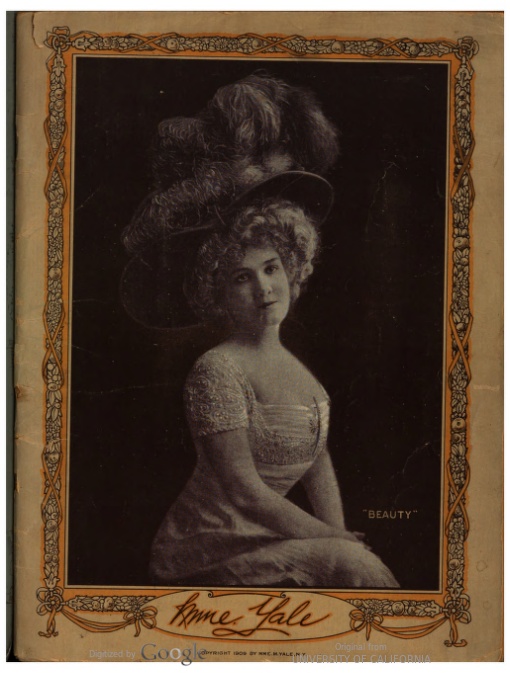Perspective on this week’s news
By Liza Horan, Editor
Workplace wellness becoming a must-have, not a nice-to-have
Recent research reveals workplace health is a grave topic. The headlines are that work stress is a major challenge, people are not seeking help with health professionals, and employees don’t feel very supported by their companies.

“Business of Health 2020,” a report released last week by US insurer Aetna, queried 1,000 workers on four continents. “Our survey results show that employers are failing to meet employee needs for health support in the workplace, resulting in a significant risk to talent attraction, retention and productivity.” There’s a real discrepancy about how employers rate their offerings, compared to how employees view them: 32% of employees rate the level of support for mental health in their workplace as poor compared to just 16% of HR Directors; 70% of employers believe they provide good access to health and wellness benefits and support, only 23% of employees agree; and more than 88% of HR Directors based in the UK, the US, the UAE and Singapore state that their company could do more to reduce presenteeism and sickness rates by improving health and wellbeing support.
So, what’s a company to do? “Tackle mental health stigma and make provision for emotional wellbeing and mental wellness,” understand the causes and symptoms of stress, and help employees with costs, among others.
The latter is very important considering 67% of U.S. bankruptcies are due to medical issues (CNBC), which appeared in the American Journal of Public Health — either bills or missing work.

My take: It’s wonderful that employers are stepping up to support employees’ mental and physical health in new ways, but are they really addressing the causes of job stress? Like poor management, workplace politics, unrealistic deadlines, understaffing, and toxic cultures, to name a few. Any program with the intention of enabling employees to perform their best should begin with a listening session, whether that’s an anonymous survey, focus groups or one-on-one feedback. If the culture is debilitating, adding free back massages on Tuesdays and meditation sessions on Thursdays could be viewed as adding whipped cream and cherry on top of a spoiled, week-old sandwich.
Keep in mind that different generations may have different needs. “Health isn’t just a physical manner to Millennials. In a recent survey, 90% of Millennials cited wanting healthcare support that also covers their emotional and mental well being,” Ashley Stahl writes in Forbes, citing several recent studies. “This is perfectly supported by a recent report from Blue Cross Blue Shield, noting that diagnoses for major depression have risen 47% for the Millennial demographic with social media and debt largely to blame.”
Shannon Hughes gets it. She’s an assistant professor at Colorado State University School of Social Work, and she’s rallying for holistic approaches to mental health care for young people: “Research shows young adults don’t want ‘one size fits all’ mental health treatment,” Hughes says in this article, noting that a holistic approach boosts outcomes and saves money. “The medicalized framework for care is limited. Young adults show a preference for alternative holistic options that can sustainably improve their lives … They crave individualized care that incorporates their whole lives.”
Turns out most people (75%) wish their healthcare experiences were more personalised, according to this US study commissioned by personalisation software company Redpoint Global, and undertaken by research firm Dynata. Redpoint’s John Nash said, “Consumer demands for a more holistic healthcare experience, better outcomes, and greater transparency in pricing are some of the key factors that are powering this shift. For healthcare payers and providers to deliver on this model and cater to today’s empowered consumer, they must have a deep understanding of each individual’s unique needs, offer highly relevant communications via preferred channels and generally remove friction from interactions – both digitally and in-person.”
Companies building the corporate wellness programs may start hiring human resources leaders who ‘walk the walk’ and ‘talk the talk.’ Camilla Tan, Head of Global Benefits at Bank of America, is one example. “For the same reasons I seek holistic wellness in my personal life, I believe it’s important for companies to invest in their employees’ wellness by providing resources and support to stay healthy,” she writes on Thrive Global. “In order for employees to do their jobs effectively, they have to be able to take care of themselves and their family first.”
Proceed at your own risk
- General drug safety: The Federal Drug Administration in the US is loosening its drug approval process for generic pharmaceutical. “A typical approval 20 years ago was based on at least two clinical trials that demonstrated a drug’s safety and effectiveness, but today half of drug approvals are given with just one trial being completed,” Bryan Hubbard says on What Doctors Don’t Tell You.”This is also reflected in the time taken to give approval. In 1983, average approval time was three years, but this had fallen to less than a year by 2017.”
- 5G: Following on last week’s warnings by Public Health England and the Italian court system, “The 5G Trojan Horse” documentary on 5G has been released by The Conscious Resistance Network, an independent media organization focused on empowering individuals through education, philosophy, health, and community. Meanwhile, Wired maintains that there’s nothing to worry about. Sounds like a lot more research is needed.
The irony of self-care
As the wellness industry jumps on developing “self-care” products and services as a new-ish revenue stream, it’s trailed by a backlash from could-be consumers who are rejecting that one has to spend dearly to take care of their wellbeing. How long will the fad continue in the face of growing conscious consumerism and efforts to reduce overconsumption?
“Companies have been quick to come up with ways to get us to open our wallets in the name of feeling more centred. Lululemon named its new line of beauty products Selfcare. At online retailer the Lake, bathrobes and mindfulness puzzles are offered up to boost your intimate self-care routine,” Caitlin Agnew writes in this Globe & Mail story. “Scroll through enough Instagram photos of beautiful people on far-flung yoga retreats, doing handstands while they sip adaptogen tea and you’re likely to feel as though you should be doing the same.”
She quotes 27-year-old Mia David, who is skeptical. “I guess that’s part of the issue that I sometimes have with brands that sell products meant for your self-care – the commodification and overcomplication of wellness. It’s not enough to just check in with yourself and allow yourself the mental space you need. It needs to be accompanied by an often-aspirational product in order to enhance or legitimize the experience,” David says.

My take: The concept of self-care is cultivating the conditions, within and outwith, to express and be your true self. And that’s different for each of us. The retail explosion is just another hashtag marketing lens and it will soon evolve. ‘Til then, here’s a great example from PureWow of the continuum of what qualifies as paid-for #selfcare — it ranges from getting a meditation manicure ($30/£23) to an urban sweat lodge session ($65/£50). (Article focused on New York City locations.) I can offer a free self-care solution: Allow yourself to sleep late once in a while.
Wellness travel presents more irony
The Global Wellness Summit’s Future of Wellness 2020 report identified wellness sabbaticals as a new form of recharging while getting work done. That’s part of the growing “Wellness Tourism” sector that was valued by the Global Wellness Institute at $639 billion in 2017. Signs of growth include Australia’s first inaugural wellness tourism industry summit in March.
While the wellness-supporting aspect of travel aspect is promising, the financial aspect is staggering and both sides of the conscious consumerism scale are in play. At one end, a seeker of an exclusive luxury escape in Hawaii may dish out $4,574 per night — and, at the other end, Swedes have invented a word for “flight shame” (flygskam) as environmentally aware people choose trains over planes for domestic travel.
Welltodo Global reports that climate change will definitely impact the wellness industry. One-third of travelers prioritise wellness when they take a trip, writes Jenny Elwin. “With climate change at the forefront of consumers’ minds, people are increasingly opting for slower modes of transport such as boats, bikes and trains, with 48% of travellers seeking to reduce their environmental impact in this way.”
Pop Culture Hits

- “Occulture” is a thing. It’s part of the mainstreaming of witchcraft. (Marketplace, a publication of American Public Media)
- Allure Magazine introduces its readership to oracle cards.
- Rappers go green: Toward educating residents of “food deserts” on healthy eating, the Brooklyn Healthy Rap Battle is planned “where Brooklyn youth will compose original rhymes about health and wellness as well as the benefits of living a plant-based lifestyle,” according to All HipHop. Food deserts are “basically a fancy word for the hoods where there are no really clean, nice, affordable grocery stores and healthy food options.” Brooklyn Borough President Eric Adams has partnered with Hip Hop is Green.
- Meet Madame Yale, beauty guru of the 1800s: Before there was Gwyneth Paltrow and Estee Lauder, there was Madame Yale (pictured), who educated women and sold her products to create beauty from the inside out. “Madame Yale rose to fame during a boom era for female beauty entrepreneurs, shortly before Elizabeth Arden and Estée Lauder, whose makeup empires endure today. But Madame Yale stood apart from these makeup moguls by promising to transform women from the inside out, rather than helping them hide their imperfections,” Emmeline Clein writes in the March 2020 issue of Smithsonian Magazine, which is online now. “That was itself an ingenious ploy: Because wearing visible makeup remained a questionable moral choice in the period, many women flocked to Yale’s product offerings, hoping to become so naturally flawless they wouldn’t need to paint their faces. In the 1890s, her business had an estimated value of $500,000—around $15 million in today’s money.”

Comments